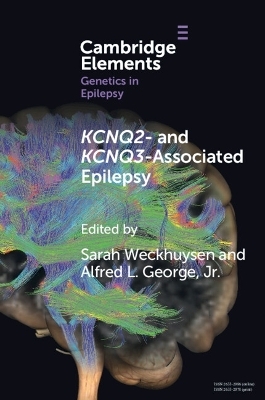
KCNQ2- and KCNQ3-Associated Epilepsy
Seiten
2022
Cambridge University Press (Verlag)
978-1-009-27826-3 (ISBN)
Cambridge University Press (Verlag)
978-1-009-27826-3 (ISBN)
A comprehensive review of the clinical features, genetic basis, pathophysiology, pharmacology and treatment of these prototypical neurological disorders accompanied by perspectives shared by affected families and scientists who have made seminal contributions to the field. This title is also available as Open Access on Cambridge Core.
KCNQ2 and KCNQ3 encode subunits (KV7.2, KV7.3) that combine to form a voltage-gated potassium ion (K+) channel responsible for generating an ionic current (M-current) important for controlling activity in the nervous system. Pathogenic variants in both genes are associated with a spectrum of genetic neurological disorders that feature epilepsy of variable severity and can be accompanied by debilitating impaired neurodevelopment. These two genes were among the first discovered causes of monogenic epilepsy, and are frequently identified in persons with early-life epilepsy. This Element provides a comprehensive review of the clinical features, genetic basis, pathophysiology, pharmacology and treatment of these prototypical neurological disorders accompanied by perspectives shared by affected families and scientists who have made seminal contributions to the field. This title is also available as Open Access on Cambridge Core.
KCNQ2 and KCNQ3 encode subunits (KV7.2, KV7.3) that combine to form a voltage-gated potassium ion (K+) channel responsible for generating an ionic current (M-current) important for controlling activity in the nervous system. Pathogenic variants in both genes are associated with a spectrum of genetic neurological disorders that feature epilepsy of variable severity and can be accompanied by debilitating impaired neurodevelopment. These two genes were among the first discovered causes of monogenic epilepsy, and are frequently identified in persons with early-life epilepsy. This Element provides a comprehensive review of the clinical features, genetic basis, pathophysiology, pharmacology and treatment of these prototypical neurological disorders accompanied by perspectives shared by affected families and scientists who have made seminal contributions to the field. This title is also available as Open Access on Cambridge Core.
Contributors; Introduction; Patient, Family and Foundation Perspectives; Basic Science of KCNQ2 and KCNQ3; Genotype-Phenotype Correlations; Treatment of KCNQ2-Associated Epilepsies; Abbreviations; Appendix: Video Transcripts; References.
| Erscheinungsdatum | 28.11.2022 |
|---|---|
| Reihe/Serie | Elements in Genetics in Epilepsy |
| Zusatzinfo | Worked examples or Exercises |
| Verlagsort | Cambridge |
| Sprache | englisch |
| Maße | 152 x 228 mm |
| Gewicht | 180 g |
| Themenwelt | Medizin / Pharmazie ► Medizinische Fachgebiete ► Neurologie |
| Studium ► 2. Studienabschnitt (Klinik) ► Humangenetik | |
| Naturwissenschaften ► Biologie ► Humanbiologie | |
| Naturwissenschaften ► Biologie ► Zoologie | |
| ISBN-10 | 1-009-27826-6 / 1009278266 |
| ISBN-13 | 978-1-009-27826-3 / 9781009278263 |
| Zustand | Neuware |
| Informationen gemäß Produktsicherheitsverordnung (GPSR) | |
| Haben Sie eine Frage zum Produkt? |
Mehr entdecken
aus dem Bereich
aus dem Bereich
Die revolutionäre Medizin von morgen (Lifespan)
Buch | Softcover (2020)
DuMont Buchverlag
CHF 22,40
Eine sehr persönliche Geschichte | Der New York Times-Bestseller
Buch | Softcover (2023)
Ullstein Taschenbuch Verlag
CHF 30,75
Buch | Softcover (2022)
John Wiley & Sons Inc (Verlag)
CHF 169,95


